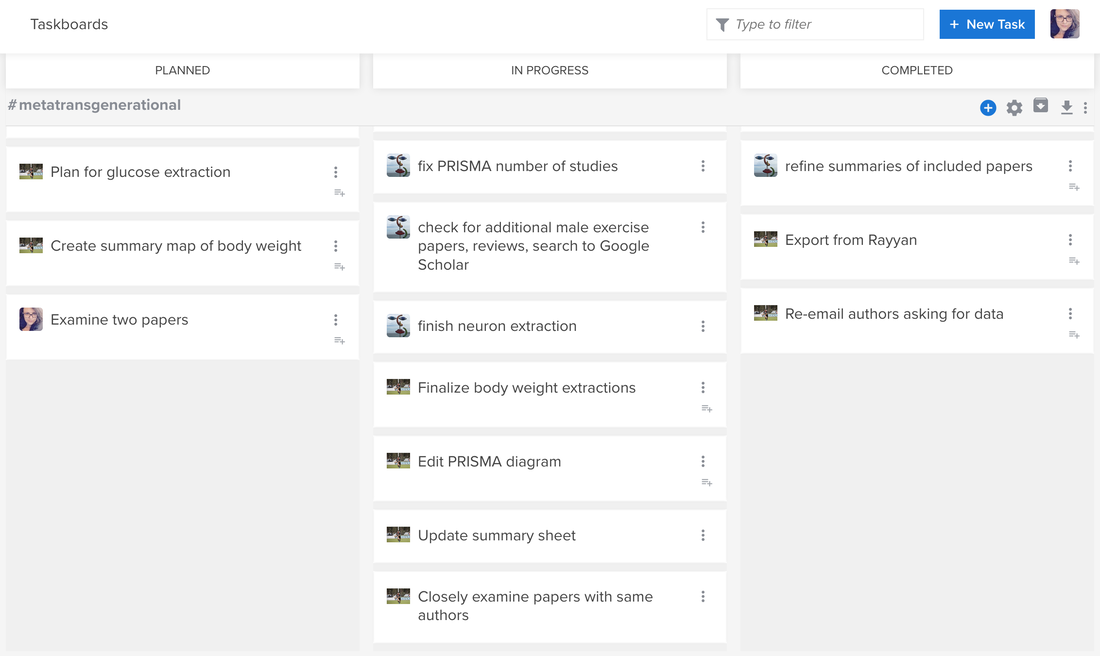Managing research projects is not easy. It gets even more complicated if there is more than one person involved. Not only many project participants need to know what needs to be done and by whom, but also what others just finished and what they are currently working on. This applies especially to meta-analyses.
Robust meta-analytic process requires at least 2 people involved in screening and extracting data. The other steps of the process (planning, searching, analysing and writing up) also greatly benefit from having more than one person involved. Large teams are not uncommon and the whole process can drag for months and even years. Both large and small teams need efficient communication and job management tools to get a good quality output in reasonable time.
There a few communication and job management software tools that worked for us, so far. For general, lab-level, across the projects and teams, task management we use a Todoist (basically an online “to-do list”), and for communication we use Slack. Last year, we started using Workstreams add-on for Slack, which appeared to be a good tool for managing systematic review and meta-analytic projects.
Workstreams have at least three big advantages:
1) Workstreams are integrated with Slack – so, no new sign-ups, setting and all the hassle of new system. Slack channels can be used to display alerts on what is happening with the tasks and you can also use shortcuts directly from Slack to crate tasks and change their status.
2) Workstreams are visual – the system it is based on a concept of a Kanban board (see the screenshot of one of our taskboards, below). Rather than just displaying the list of tasks that need to be done, it has three columns (you can add more and customise). The default columns are: planned, in progress and finished – you can drag the tasks between the columns, as needed. The tasks can also be assigned to people, labelled, priority reordered, commented on, have attached files, etc. So, Workstreams have quite a lot of functionality, but they are also easy and intuitive to use.
3) Workstreams are free - at least the basic version. The PRO version is quite pricey (user/month $9.99) and it comes with a few more functions, of which only one is really useful – setting deadlines and reminders (however, we can go around this problem by using /remind bot function from Slack).
You can learn more about Workstreams here. From my experience, if used consistently by the team members, Workstreams (with Slack) is a good tool for managing research projects such as systematic reviews and meta-analyses (and other projects), especially if you are not a big fan of traditional (even digital) to-do lists.


 RSS Feed
RSS Feed